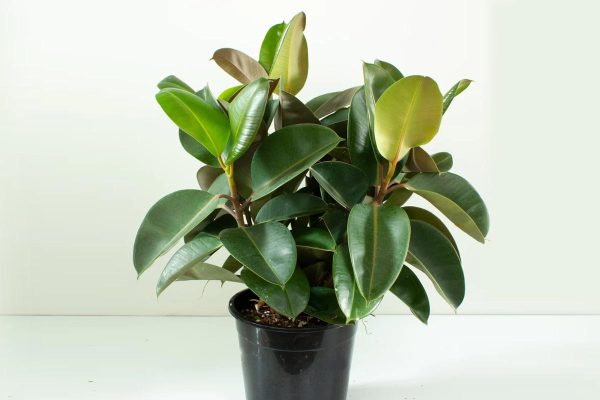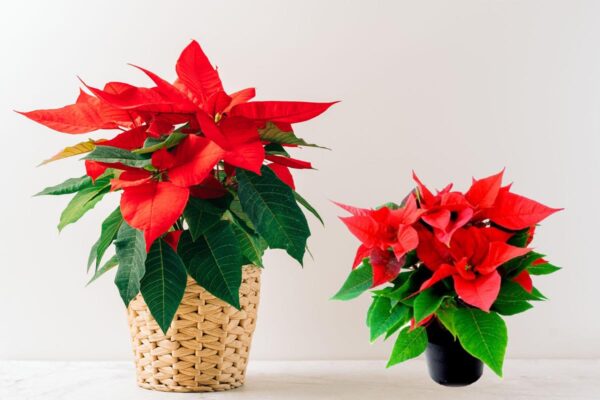Plants
Croton
Introduction / परिचय
The Croton plant, scientifically known as Codiaeum variegatum, is a popular ornamental shrub renowned for its striking foliage. Native to Southeast Asia and the Pacific Islands, this evergreen plant features glossy, leathery leaves in vivid red, orange, yellow, and green. The leaves often display unique patterns and striations, adding a dramatic touch to indoor and outdoor gardens. Croton plants thrive in warm climates and require well-draining soil. They are relatively low-maintenance but benefit from bright, indirect light. With their vibrant appearance, Croton plants are cherished for their aesthetic appeal, making them a favourite among garden enthusiasts.
| English Name: | Croton |
| Hindi Name: | क्रोटोन (Croton ) |
| Scientific Name: | Codiaeum variegatum |
| Family: | Euphorbiaceae |
| Kingdom: | Plantae |
| Light : | bright, indirect light when grown indoors |
| Height: | 6-10 feet tall Indoor |
| Flower Color : | - |
| Leaves Color : | colorful foliage, red, orange, yellow, green, and purple. |
| Eason Features : |
Also Read This :Green Guardians: Exploring the Best Plants Used for Hedges
When to Plant Croton Plant
The Croton plant (Codiaeum variegatum) is typically propagated through stem cuttings rather than seeds. The best time to plant Croton is during the spring or early summer when temperatures are warm, and the plant is entering its active growing season. Choose a well-draining potting mix and a container with drainage holes to avoid waterlogging. Take healthy stem cuttings with at least a couple of leaves, dip the cut end in the rooting hormone, and plant them in the soil. Keep the soil consistently moist until roots develop. Crotons thrive in bright, indirect light and should be protected from drafts and temperature extremes.
Flowering time of Rubber Plant
Croton plants are primarily grown for their attractive foliage rather than their flowers. While they do produce small, inconspicuous flowers, the plant is more valued for its colorful and variegated leaves. The flowering time for Croton plants can vary, but they typically bloom in late spring to early summer. However, it's important to note that the flowers are not the main ornamental feature of the plant; it's the vibrant and diverse foliage that makes Croton a popular choice for gardens and indoor spaces. Regular pruning can help maintain the plant's shape and encourage bushier growth, but it won't significantly affect the flowering patterns.
Also Read This :How to Growing Krishna Kamal, Lord Krishna’s Favorite Flower, at Home
Varieties / किस्मे
Croton plants (Codiaeum variegatum) come in various cultivars, each with unique leaf shapes, sizes, and colour patterns. Here are some popular Croton plant varieties:
Petra:
Known for its bright red, orange, and green leaves, often with a central vein of bright pink or red.
Mammy:
Features narrow, twisted leaves with red, pink, orange, and green colours.
Norma:
Recognized for its large, leathery leaves with a mix of yellow, orange, and red tones.
Gold Dust:
Characterized by tiny green leaves speckled with yellow spots, resembling gold dust.
Zanzibar:
Showcases elongated leaves with vibrant red, orange, and yellow shades.
Magnificent:
Has large, broad leaves with dark green, red, and yellow hues.
Stoplight:
Named for its red, yellow, and green leaves that resemble a traffic light.
Rusty:
Features leaves with rusty red tones and variegated patterns.
Sunny Star:
Noted for its star-shaped leaves in yellow, orange, and red shades.
Gold Sunburst:
Exhibits a combination of green, yellow, and orange hues in a sunburst pattern.
Choosing a Croton variety is essential based on your preferences and the growing conditions in your area. Remember that Croton plants thrive in warm, tropical environments and require well-draining soil and bright, indirect light for optimal growth.
Also Read This :Embracing the Beauty of Indoor Plants with Striking Red Leaves
Classification of Plants/ पौधों का वर्गीकरण
Croton plants belong to the Euphorbiaceae family and the Codiaeum genus. The scientific name is Codiaeum variegatum. This diverse species is native to Southeast Asia and the Pacific Islands. Classified as evergreen shrubs, Crotons are known for their striking foliage rather than inconspicuous flowers. The leaves exhibit various colours and variegations, making them popular ornamental plants. The genus name "Codiaeum" is derived from the Greek words "koios," meaning 'about,' and "daios," meaning 'sheen,' reflecting the glossy appearance of the leaves. The varied cultivars within the species showcase the plant's adaptability and aesthetic appeal in gardens and interiors.
Also Read This :Growing Syngonium Plants at Home: A Simple Guide Using Cuttings and Seeds
History / इतिहास
The history of Croton plants (Codiaeum variegatum) dates back to their origins in Southeast Asia and the Pacific Islands. Revered for their vibrant foliage, Crotons have been cultivated for centuries as ornamental plants. They gained popularity during the Victorian era as coveted greenhouse specimens. In the mid-20th century, they became prized houseplants. Croton's distinctive leaves, featuring a dazzling array of colours and patterns, have contributed to their global appeal in landscaping and interior décor. Over time, various cultivars have been developed, enriching the diversity of this tropical plant and ensuring its enduring presence in horticulture worldwide.
Also Read This :Right Direction to Keep Tulsi Plant in Your Home
Uses and Benefits / उपयोग एवं फायदे
Croton plants, valued for their vibrant foliage, serve both ornamental and practical purposes. In gardens and indoor spaces, they enhance aesthetic appeal with their colourful and variegated leaves. Beyond aesthetics, Croton plants contribute to indoor air purification by removing pollutants. Some traditional medicinal practices also incorporate Croton extracts for their potential anti-inflammatory properties. While caution is necessary due to the plant's toxic sap, specific indigenous communities have used Croton for medicinal purposes. In landscaping, they act as versatile hedges or accent plants. The Croton plant combines visual allure with potential air-purifying and medicinal attributes.
Also Read This :Curry Leaves – Health Benefits and how to use them
How to Grow Plant / कैसे उगाएं
Growing Croton plants from cuttings is a common method for propagation. Here's a step-by-step guide on how to do it:
Materials Needed:
- Healthy Croton plant
- Pruning shears or scissors
- Rooting hormone (optional)
- Potting mix
- Small pots or containers
- Plastic bag or plastic wrap
- Warm and bright location
Steps:
Select a Healthy Plant: Choose a healthy and mature Croton plant for taking cuttings. Look for stems with new growth.
Prepare the Cutting: Use clean pruning shears or scissors to cut a 4-6 inch (10-15 cm) section of a stem just below a leaf node. A leaf node is where a leaf is attached to the stem.
Remove Lower Leaves: Trim away the leaves from the lower half of the cutting, leaving a few leaves at the top. This reduces moisture loss and directs energy towards root development.
Optional: Apply Rooting Hormone: Dip the cut end of the Croton cutting into rooting hormone if you have it. This can enhance the chances of successful rooting.
Plant the Cutting: Insert the cut end of the Croton cutting into a small pot filled with a well-draining potting mix. Make a hole in the soil with a pencil or stick before inserting the cutting.
Watering: Water the soil thoroughly after planting the cutting. Ensure the soil is consistently moist but not waterlogged.
Create a Humid Environment: Enclose the pot with a plastic bag or plastic wrap to create a humid environment. This helps prevent excessive moisture loss from the cutting.
Place in a Warm and Bright Location: Put the potted cutting in a warm location with bright, indirect light. Avoid direct sunlight, as it may be too harsh for the young cutting.
Monitor and Transplant: Keep an eye on the cutting for signs of new growth and root development. Once the cutting has established roots, usually after a few weeks to a couple of months, you can transplant it into a larger container or your garden.
Remember to be patient, as not all cuttings will successfully root. Providing the right conditions and care will increase the likelihood of success in growing a new Croton plant from a cutting.
Also Read This :Blooming Brilliance : 5 Ingenious Ways to Use Banana Peels in Your Garden
How to Take Care/ देखभाल कैसे करे
Also Read This :Tips For Curry Plant Growth: Secrets to Rapid Curry Plant Growth
Interesting Facts / रोचक तथ्य
Croton plants, belonging to the Euphorbiaceae family, boast fascinating traits. Their leaves are richly coloured due to pigments like chlorophyll and carotenoids. Native to Malaysia and the Pacific Islands, Crotons thrive in tropical climates. These evergreen shrubs are renowned for their air-purifying qualities and ability to remove pollutants. However, their milky sap is toxic and can cause skin irritation. In traditional medicine, Croton extracts are explored for potential anti-inflammatory benefits. The plant's name, Codiaeum variegatum, hints at its variegated leaves. Crotons can vary widely in leaf shape, size, and colour, making them prized ornamentals worldwide.
Also Read This :How to Grow Croton Plants From Cuttings and care it




